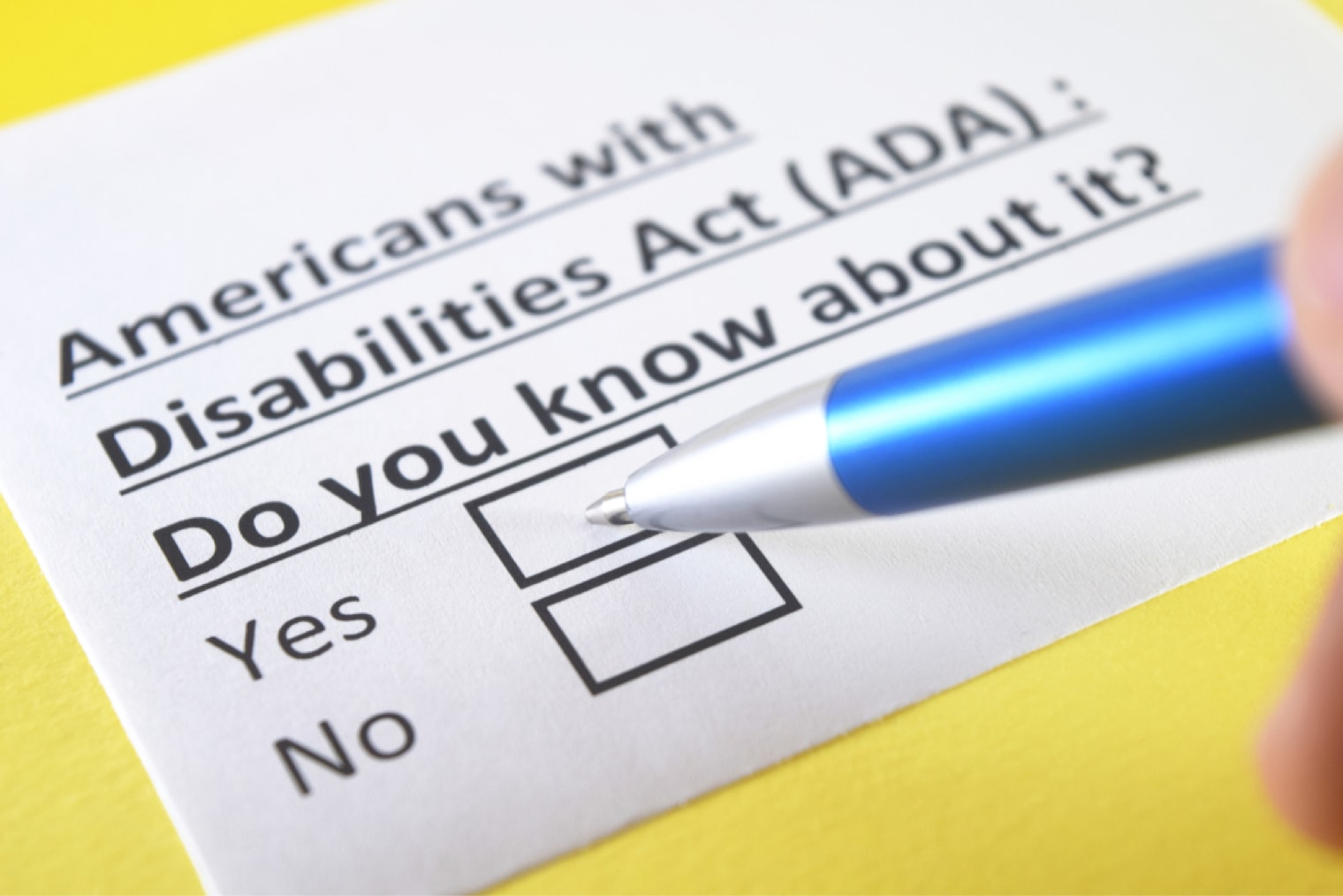What Is ADA Compliance For Websites And Is It Different To WCAG?
If your business operates in the US you may have heard of ADA Compliance.

Oops! We could not locate your form.
If your business operates in the US you may have heard of ADA Compliance.

ADA or the Americans With Disabilities Act, is an American law that came into being in 1990. It protects those with disabilities from discrimination and exclusion. This covers many areas, from employment law and accessible building design, through to digital accessibility.
Whilst existing laws (Section 508 of the Rehabilitation Act) pertained only to accessibility requirements for government and federal bodies and those funded or contracted by them, the ADA differs in that it applies to the private sector.
Businesses with American employees, customers or users are required to make reasonable adjustments to ensure that they are not excluding or placing hurdles in the way of people with disabilities from interacting with them in any of these capacities.
As previously mentioned, this applies to the digital world. Whether it’s software products, online portals or websites. This brings us into the realm of web accessibility.
Web accessibility encompasses making the web accessible for all. In an ideal world, accessibility would be deemed as an intrinsic part of providing a good user experience. However, it exists independently as a facet of web design and development, as it is still something that too many businesses fail at or ignore.
There are estimates that in the UK alone, the loss to businesses from not adequately meeting the needs of those with disabilities is over £2 billion.
W3C, the World Wide Web Consortium is an organisation founded by Tim Berners-Lee. It is dedicated to the continued development and definition of web standards, including those for web development. These cover areas such as HTML, CSS, XML and Accessibility.
The W3C Web Accessibility Initiative develops and maintains the following accessibility standards:
WCAG, as its name suggests, is concerned with the accessibility of web content, including text, imagery, and markup.
You can read this post to learn more about WCAG (Web Content Accessibility Guidelines). But in summary, WCAG offers guidance on best practice for providing accessible websites for all users. These are continually updated and go through version changes to ensure they are providing the most up-to-date guidance as web technologies evolve.
Within the standards, W3C provide 3 levels of accessibility compliance, denoted by A, AA & AAA. With A being the base level for providing an accessible website. AA and AAA build of this basic level.
In the UK there is no legal requirement for private businesses to meet a certain level of accessibility with their websites. This is different for government and public bodies, which have to meet WCAG single A compliance as a minimum.
In the US, Section 508 of the Rehabilitation Act, requires that WCAG AA compliance is necessary for government and federal websites and portals. But there is no such clarity when it comes to ADA and private businesses. The ADA guidance is somewhat vague on what acceptable web accessibility looks like, although WCAG AA has been alluded to. Therefore, using Section 508 as guidance is a fairly safe approach to ensure ADA compliance and a high standard of accessibility.
If you operate in the US, the short answer is yes. There have been many lawsuits related to website accessibility and ADA compliance, and they are on the rise. It is better to be safe than sorry.
Exempted From ADA Compliance
The best way to achieve a solid level of web accessibility is to meet WCAG 2.1 Level AA guidelines. Although WCAG 2.2 was published this October and should probably supersede this. These are seen as the standard in website accessibility and provide a comprehensive framework.
If you’re not sure if your website is ADA-compliant, there are many resources available to help you.
If you intend on redesigning your website, Impact Media build all websites to a minimum if WCAG 2.1 A as standard. For our clients that operate in the US we always recommend WCAG 2.2 AA.
In the build of our page templates we test for WCAG AA compliance and within the remit of your brand guidelines (sometimes outside our control) we handover in a passed state.
However, once a website is in client hands there can be content related tasks that can make a page fail. It’s recommended that post launch, you invest in regular accessibility tests in which 3rd party tools can be run. We can be on retainer to help with patching any new requirements from a development standpoint and work with you on helping with any content based tasks.
